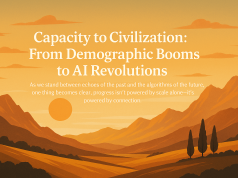In the pulsing heart of the modern professional landscape, a silent revolution has taken hold, fundamentally altering the way we conceptualize ‘the office’ and our daily work lives. This revolution has a name: remote work. What began as a niche practice, often viewed with skepticism by traditional businesses, has burgeoned into a widespread phenomenon, reshaping not only individual routines but also corporate strategy and urban dynamics, particularly in bustling metropolises like New York City.
Remote work, once the exception, has become the norm for many, hastened by the unexpected global events that have swept across our calendars. The transition from the centralized office environment to a dispersed workforce is multifaceted, bringing with it a host of challenges and opportunities in the realms of company culture, communication, collaboration, and beyond.
As an avid advocate for the remote lifestyle, it is my endeavor to unpack this complex transition for the esteemed readers of The Work Times. We’ll delve into the heart of how this shift impacts the corporate tapestry and how businesses can navigate the hitherto uncharted waters of a sprawling digital workforce.
**Cultural Shifts and Communication Overhauls**
Remote work necessitates not just a change in location, but a cultural transformation. Companies acclaimed for their vibrant office atmospheres are now faced with the task of translating that culture into a virtual format. While remote work can foster a sense of independence, it can also attenuate the shared experiences that bond employees. Asynchronous communication has replaced the immediacy of in-person exchanges, demanding a recalibration of expectations and a redefinition of responsiveness.
Businesses that succeed in maintaining a strong culture have reimagined their rituals and touchstones for the digital space. Regular video calls, virtual team-building exercises, and digital ‘water coolers’ for casual interactions are becoming routine in preserving a sense of community.
**Collaboration and Productivity in the Digital Domain**
Collaboration, a cornerstone of innovation, faces its own set of trials in a remote setting. The spontaneous ‘brainstorming’ sessions that once sparked creativity are being replaced by structured virtual meetings that often require more planning but can be equally effective with the right tools and approaches. To combat potential declines in productivity, successful companies are leveraging project management software and unified communication platforms to keep teams aligned and on track.
Yet, with these tools comes the risk of digital fatigue. Businesses must balance the need for connectivity with respect for personal boundaries, encapsulating a work-life harmony that is sustainable in the long term.
**Adapting Management Styles and Employee Well-being**
Managing a remote workforce demands a pivot in leadership styles. Trust and empowerment become pivotal as micromanagement is rendered impractical, if not impossible. Employees are assessed by their output and impact rather than their time spent visibly at a desk. Managers are learning to lead with empathy, understanding the diverse domestic situations from which their employees are working.
Employee well-being has rocketed to the forefront of corporate priorities. Initiatives like virtual mental health support, flexible working hours, and ergonomic home office stipends are being adopted to support the holistic health of the workforce.
**New York Perspectives and the Urban Evolution**
For New York, the quintessential city of skyscrapers and bustling offices, the implications of remote work are significant. The decrease in daily commuters has changed the rhythm of city life, potentially leading to a reimagining of urban spaces. Could we see a renaissance of residential and mixed-use developments as the demand for commercial real estate wavers?
The future of work is undeniably fluid, and as it continues to evolve, so too must our strategies for fostering inclusive, productive, and resilient teams. By embracing the remote work revolution with thoughtful policies and a human-centric approach, businesses can thrive amidst the challenges of a dispersed workforce.
In conclusion, as we stand at the crossroads of tradition and innovation, the narrative of work is being rewritten. For businesses, flexibility, adaptability, and an unwavering commitment to their employees’ experience will be key in navigating this new era. Remote work is not a fleeting trend; it is a transformative movement that is reshaping the very foundations of our work culture and, if navigated thoughtfully, can lead to a brighter, more balanced future for us all.




























